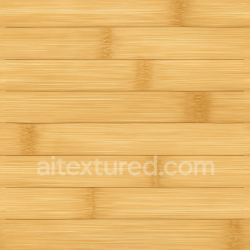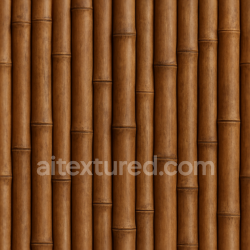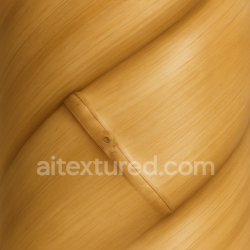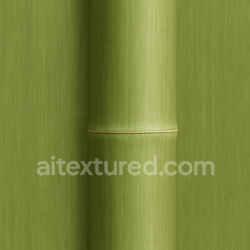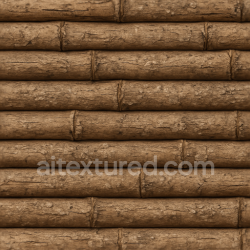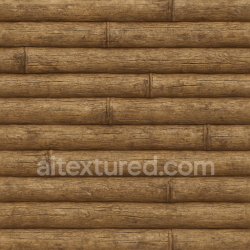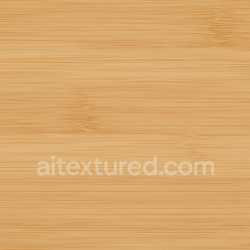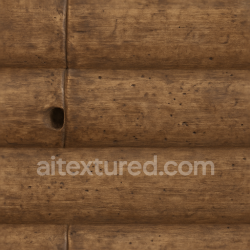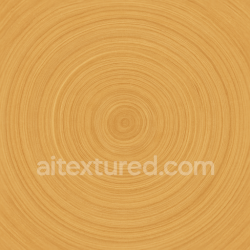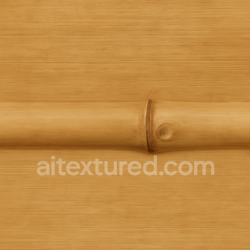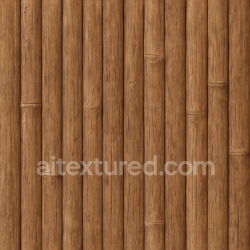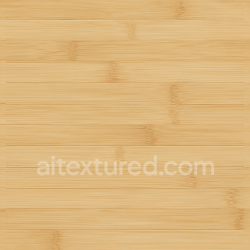Mastering Seamless PBR Explosion Textures for Realistic 3D Visual Effects
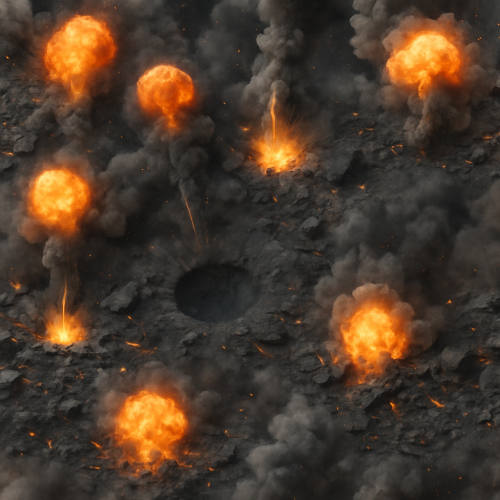
Capturing authentic explosion texture data presents unique challenges that distinguish it from standard environmental or architectural photogrammetry workflows. Explosions are inherently dynamic, ephemeral phenomena characterized by rapid changes in light, color, shape, and physical state—ranging from incandescent fireballs to dense smoke plumes, charred surfaces, and blast-distorted ground. To build a physically based rendering (PBR) texture library that faithfully represents these elements, it is essential to employ a combination of high-fidelity acquisition techniques and carefully calibrated authoring processes. This ensures the resulting textures deliver the necessary realism and technical robustness when integrated into engines such as Unreal Engine or Blender’s Eevee and Cycles renderers.
At the foundation of explosion texture acquisition lies the need for high-resolution, spatially accurate data capturing the nuances of fire, smoke, and aftermath debris. Photogrammetry, traditionally used for static objects, can be adapted to capture post-explosion surfaces like blast craters and scorched ground. While capturing active fireballs or smoke plumes in situ with photogrammetry is impractical due to their transient volumetric nature, detailed photographic references under controlled lighting conditions become invaluable. High-frame-rate photography combined with controlled detonations (e.g., in a controlled pyrotechnic range) can freeze specific moments of an explosion’s progression, offering snapshots of critical texture elements such as flame edges and smoke density variations. These images, when processed into texture maps, provide the albedo data essential for base color channels, capturing the complex gradients of yellows, oranges, reds, and grays characteristic of combustion.
For surfaces affected by explosions—such as soil disrupted by a blast or metallic debris warped by heat—structured light scanning or laser scanning systems offer precise geometric data. These scans can generate high-resolution normal and height maps that encode surface micro-variations critical for believable displacement and parallax effects. The subtle undulations of crater rims, cracks in scorched earth, and pockmarks on blasted metal surfaces contribute significantly to realism when translated into normal and height maps. Ambient occlusion (AO) maps derived from these scans add depth to crevices and enhance shadowing, especially in real-time engines where baked AO can compensate for limited dynamic lighting.
Building a robust base for explosion textures requires meticulous calibration of the acquired data. Photogrammetry-derived albedo maps must be linearized and color-calibrated against known standards, as fire and smoke exhibit emission spectra that can lead to color saturation or clipping in raw photos. Applying tone mapping and exposure correction is necessary to preserve subtle color shifts without losing detail in bright flame cores or dark smoke areas. Additionally, roughness maps for explosion aftermath surfaces demand careful attention. Burnt and charred materials tend to have complex roughness patterns, with areas of high glossiness where oils or melted residues create specular highlights, juxtaposed against matte, ashy regions. These variations can be captured by analyzing specular response during multi-angle photography or extracted from scanned surface reflectance data.
Micro-variation is a vital consideration throughout explosion texture creation. Real-world explosion aftermath rarely exhibits uniform patterns; instead, it features intricate heterogeneity, from soot deposits to cracked paint and warped metal. To simulate this convincingly, authors should incorporate multiple layered texture sets with subtle variations in roughness, albedo, and displacement maps. These micro-variations can be blended procedurally in shader networks within Unreal Engine’s Material Editor or Blender’s node-based material system to prevent tiling artifacts and reinforce realism. For example, using noise or grunge masks modulated by world-space coordinates can break repetition and introduce stochastic detail, crucial for large-scale blast zones in game environments or VFX scenes.
Tiling considerations are paramount when working with explosion textures, especially for large-scale environments requiring extensive coverage of scorched earth or debris fields. Due to the high visual complexity and irregularity of blast-affected surfaces, seamless tiling is challenging. One approach is to capture multiple overlapping photogrammetry scans of different blast zones and stitch their albedo and roughness textures into atlases with minimal seams. Another method involves authoring tileable base textures derived from procedural noise that emulate explosion damage patterns, augmented by high-resolution detail maps from scanned data for close-up fidelity. Height and normal maps should be baked carefully to avoid discontinuities at tile borders, with edge blending techniques applied in texture authoring software like Substance Designer or Quixel Mixer. These steps are crucial to maintain immersion and avoid breaking player suspension with obvious repetition.
Optimization for real-time engine usage demands balancing texture resolution with performance. Explosion textures often require large resolutions (4K or higher) to preserve fine detail in normal and height maps, yet these maps can impose significant memory and bandwidth costs. It is advisable to generate mipmaps that retain detail in albedo and roughness while aggressively filtering height and normal maps beyond the first few levels. Unreal Engine’s virtual texturing and texture streaming systems can alleviate some performance costs by prioritizing high-detail textures in camera proximity. For Blender workflows, especially with Eevee, baking AO and height maps into combined shader inputs can reduce shader complexity. Additionally, channel packing—storing roughness, metallic, and ambient occlusion data within different channels of a single texture—streamlines GPU fetches, although metallic maps are rarely applicable to explosion textures except for certain debris materials like melted metals.
When authoring explosion textures, it is crucial to maintain consistency between the physical properties encoded in the PBR maps and the dynamic lighting conditions under which explosions are typically viewed. For example, fire and smoke have strong emissive qualities that standard albedo and roughness maps alone cannot capture. While true volumetric rendering of fire and smoke often relies on specialized shaders or particle systems, the accompanying ground and debris textures must be physically plausible under high-contrast lighting. Calibration against HDR environment captures of pyrotechnic tests can guide the appropriate roughness and AO levels to ensure the materials react realistically to specular highlights and shadowing in real-time engines. In Unreal Engine, for instance, the use of subsurface scattering or emissive materials can complement the base PBR textures to simulate glowing embers or residual heat.
In summary, the acquisition of explosion texture data is a multidisciplinary endeavor combining high-speed photography, photogrammetry adapted for transient phenomena, and precision scanning of aftermath surfaces. By integrating these data sources and rigorously calibrating them within a PBR workflow, artists can produce textures that convey the complex interplay of fire, smoke, and blast damage. Attention to tiling, micro-variation, and engine-specific optimization ensures these textures function efficiently and convincingly in real-time rendering contexts. This foundation enables the creation of immersive, physically accurate explosion effects that withstand close scrutiny and dynamic lighting conditions in modern 3D applications.
Creating authentic explosion PBR textures demands a meticulous balance between procedural generation and photographic source material, especially when the end goal is to produce dynamic, seamless surfaces that convincingly portray the chaotic nature of destruction. The complexity of explosion surfaces—characterized by irregular debris, charred residues, soot, and intricate patterns of burnt material—poses unique challenges for texture authors, who must encapsulate these elements within a physically-based rendering framework. This requires careful acquisition, blending, and refinement of albedo, roughness, normal, ambient occlusion (AO), height, and sometimes metallic maps, to ensure realistic material response under varied lighting conditions and viewing angles.
Starting with the albedo or base color map, photographic captures remain a critical foundation. High-resolution photographs of burnt wood, charred concrete, scorched metals, and ash deposits provide the nuanced color variations and organic randomness essential for believability. However, raw photos seldom tile seamlessly or contain the micro-variations needed to avoid repetition artifacts in large-scale explosions. Here, procedural texturing tools such as Substance Designer or Blender’s procedural shader nodes become invaluable. By isolating key color elements from photographic references and coupling them with noise functions, fractal patterns, and edge wear generators, one can synthesize albedo layers that replicate the randomness of soot accumulation and heat-affected zones. These procedural layers can be overlaid and blended using masks derived from procedural noise or curvature maps, creating complex coloration gradients that respond dynamically to geometry features.
Roughness maps for explosion textures require precise calibration because surface reflectivity varies drastically across burnt and intact areas. Photographic roughness data can be extracted using specialized setups like cross-polarized photography or photogrammetry with controlled lighting to differentiate matte soot from glossy melted surfaces. However, when such data is unavailable, procedural generation offers a powerful alternative. By leveraging noise-based masks modulated with curvature or ambient occlusion data, one can simulate the erratic roughness distribution typical of explosive debris. For example, edges of fractured materials often have higher roughness due to micro-fractures and soot buildup, while exposed metal fragments may exhibit reduced roughness. Adjusting roughness intensity based on height map gradients further enhances realism by simulating how surface wear and thermal damage affect material glossiness.
Normal maps, fundamental for conveying fine surface details under dynamic lighting, present a unique challenge in explosion textures due to their inherently chaotic geometry. Photogrammetric capture methods can yield detailed normal maps of actual explosion debris, but their integration into tileable textures requires careful projection and retouching to avoid seams. Procedural normal map generation, often derived from height or displacement maps synthesized via fractal noise combined with directional masks (emulating blast direction and debris scattering), is frequently employed to fill gaps or extend photographic data. The use of detail normal overlays—fine-grained noise patterns that add micro-variation—helps break up uniformity and enhances the tactile quality of surfaces such as cracked concrete or burnt wood grain. In Blender or Unreal Engine, normal maps authored procedurally can be dynamically blended with baked maps using shader graph nodes, allowing artists to tune surface detail intensity in real-time.
Ambient occlusion maps contribute significantly to grounding explosion textures within the 3D environment by simulating self-shadowing in crevices and fractured areas. While AO maps are sometimes baked from high-poly models, for explosion textures where geometry complexity can be overwhelming, procedural AO generators provide an efficient method to approximate shadowing effects. By combining curvature-based AO with noise-driven masks that reflect soot accumulation in recessed areas, one can achieve richer occlusion variations that emphasize the depth and damage extent. It is critical to ensure AO maps are calibrated to avoid excessive darkening, which can flatten the texture when combined with other maps in the shader. Employing engine-specific AO blending modes, such as Unreal Engine’s ambient occlusion channel within the material setup, can fine-tune how AO interacts with global illumination.
Height or displacement maps are indispensable for adding volumetric depth to explosion textures, particularly when used with tessellation or parallax occlusion mapping techniques in modern engines. Procedural height maps that simulate cracks, fractures, and debris layering are often generated using a combination of cellular noise (for irregular debris clusters) and directional gradient masks (to imply blast force vectors). Photographic height data, when available through photogrammetry or height-from-shading extraction algorithms, enhances authenticity but requires substantial cleanup to become tileable. Seamless tiling is crucial to avoid visible repetition in large surfaces such as damaged walls or ground scorch marks. Techniques like edge blending, symmetry breaking with noise overlays, and curvature-based erosion masks help maintain natural variation while preserving texture continuity. In Blender’s displacement modifiers or Unreal Engine’s displacement shaders, these height maps drive subtle geometry deformation that significantly enhances the perceived realism of destruction.
While metallic maps are less commonly needed for explosion textures, they are relevant when metallic debris, such as shattered vehicle parts or molten metal pools, is present. When authoring such maps, photographic references of oxidized or heat-treated metals can be converted into metallic masks, isolating reflective metal regions from non-metallic burnt materials. Procedurally, metallic areas can be generated by thresholding roughness or albedo data combined with specific color channels indicative of metal presence (for example, desaturated grays or burnt orange hues). Proper calibration ensures metallic regions interact correctly with environment reflections and specular highlights, avoiding unrealistic “plastic” appearances.
Optimization is a continuous concern when authoring explosion PBR textures due to the potentially large texture footprints required for high-detail destruction effects. To manage this, a common strategy involves multi-scale layering: a low-frequency base texture derived from photographic data sets the primary color and roughness, while high-frequency procedural detail maps (normal, noise overlays, micro-roughness variations) are tiled at higher repetition rates. This approach maximizes visual complexity without exorbitant memory usage. Texture atlasing and channel packing—where roughness, metallic, and AO maps share texture channels—are practical methods to conserve resources. Furthermore, texture streaming capabilities in engines like Unreal Engine allow for dynamic LOD management, enabling high-resolution details only in player proximity.
In terms of real-time engine integration, Unreal Engine’s material editor offers powerful tools to combine photographic and procedural inputs. Using layered blend nodes and masks derived from curvature, ambient occlusion, and vertex colors, artists can construct materials that react dynamically to in-game conditions such as heat glow or soot accumulation over time. Displacement and tessellation settings provide an additional dimension of realism, allowing explosion textures to deform geometry subtly, simulating damaged surfaces. Blender’s shader nodes are equally capable for authoring and previewing these textures, with the added advantage of baking procedural maps directly from shader setups, facilitating iterative refinement before export. The ability to script procedural generation workflows in both environments enables automation for large-scale explosion texture sets, which is crucial for production pipelines.
Ultimately, the key to successful explosion PBR textures lies in the thoughtful fusion of photographic authenticity and procedural flexibility. Photographic captures ground the textures in reality, offering rich color and surface detail, while procedural tools inject the micro-variation, scalability, and seamlessness necessary for dynamic destruction surfaces. Maintaining strict adherence to physically-based principles—accurate reflectance, consistent roughness behavior, and coherent microgeometry representation—ensures that these textures respond plausibly under diverse lighting scenarios. By leveraging the complementary strengths of photographic and procedural methods within optimized PBR workflows, artists can create explosion textures that convincingly convey the raw, unpredictable nature of destruction without sacrificing technical efficiency or artistic control.
Creating accurate PBR maps for explosion textures requires a nuanced understanding of the physical and chemical transformations that occur during and after an explosive event. This entails carefully capturing the visual complexity of burning rubble, molten metal flows, and smoke residues, all of which exhibit distinct surface characteristics governed by their unique material states and thermal histories. Achieving photorealism in these textures demands a rigorous workflow that combines high-resolution source data, procedural refinement, and meticulous calibration against real-world references.
The albedo map, or base color texture, is foundational in defining the diffuse reflectance properties of explosion-affected surfaces. For explosion materials, albedo must capture the interplay of charred materials, incandescent molten metal, and residue deposits. Burning rubble typically exhibits a broad spectrum of darkened, desaturated tones interspersed with vivid, glowing embers. This requires sampling from high dynamic range photographs of actual post-explosion debris, supplemented by close-up macro captures of charred wood, concrete spall, and soot accumulations. When authoring albedo textures, it is critical to avoid baked-in shadows or lighting effects; instead, the color data should reflect pure surface pigmentation. To ensure the albedo remains physically plausible, the reflectance values must fall within the expected diffuse reflectance range for non-metallic surfaces, typically below 0.95 in linear space, accounting for the soot’s matte blackness and the molten metal’s emissive glow which should be reserved for emissive channels rather than albedo.
Normal maps are indispensable for conveying the microsurface geometry that defines the tactile feel of explosion debris. Accurate normals for a chaotic environment like an explosion require capturing both the fractured, roughened surfaces of rubble and the smooth, dynamic flows of molten metal. Photogrammetry and high-resolution scanning provide excellent base data for normals, particularly for rubble that features cracks, chips, and angular fractures. However, since photogrammetry can introduce noise and irregularities, it is often necessary to blend these raw normals with procedural detail generated through software like Substance Designer or Blender’s node-based texturing tools. For molten metal, the normal map should reflect subtle ripples and flow patterns, which can be achieved using procedural noise functions modulated by flow direction vectors derived from simulation data or artist-directed gradients. Smoke residue, being primarily a thin, particulate deposition, benefits from micro-normal variation that simulates fine ash and soot layers, implemented via detail normal overlays that tile seamlessly to avoid repetition.
Roughness maps must be sculpted to capture the varied specular responses across explosion materials. Roughness controls the microsurface scattering and glossiness, defining how light interacts with the surface irregularities. Burning rubble is generally very rough, with a high roughness value reflecting the matte, porous charred surfaces, but localized areas around embers or exposed mineral layers may exhibit slightly lower roughness. Molten metal contrasts sharply, exhibiting smooth, highly reflective surfaces with low roughness where the metal remains molten or freshly solidified, but increasing roughness as the metal cools and oxidizes. To accurately author roughness maps, it is advisable to sample material references under controlled lighting, often using gonioreflectometers to quantify the BRDF characteristics of similar materials. These measurements can inform the procedural generation of roughness, modulating between rough, oxidized areas and smooth molten zones. Smoke residue tends to add a subtle matte veil, increasing roughness slightly, so overlaying a noise-based roughness variation can simulate this effect. Calibration of roughness values must be done carefully in the target rendering engine, as Unreal Engine’s roughness interpretation differs subtly from Blender’s Principled BSDF; artists should adjust maps accordingly to maintain consistent visual results across platforms.
While metallic maps are often minimal or absent in explosion textures, molten metal components require precise metallic map creation. Metallic maps are binary or near-binary in PBR workflows, delineating conductive metals from dielectric substances. In explosion textures, molten metal areas—such as exposed steel beams or metal fragments—should be marked with a metallic value of 1.0, while adjacent ashy or ceramic rubble must be set to 0. This dichotomy is critical because it drives the rendering engine’s reflection model, influencing both specular intensity and Fresnel behavior. When authoring metallic maps, it is best to start from clean masks derived from albedo or height maps, carefully refined to avoid bleeding edges that would cause unrealistic reflections. In complex scenarios where oxidation layers or partially melted surfaces occur, artists may use grayscale metallic values to simulate transitional material states, though this should be tested for engine compatibility and visual fidelity.
Ambient occlusion (AO) and height maps complement the primary PBR channels by enhancing shadowing and depth perception. AO maps for explosion textures should emphasize the deep crevices and cracks within rubble piles, accentuating the visual complexity of fractured surfaces. These can be baked from high-poly geometry or derived through curvature analysis, then adjusted to prevent overly dark ambient occlusion that could flatten details. Height maps are particularly useful for parallax occlusion mapping or displacement in engines like Unreal Engine, where they add dimensionality to flat surfaces. For explosion debris, height maps should encode sharp edges, surface chips, and molten metal ridges, providing tactile cues that reinforce realism. It is important to optimize these maps to balance fidelity with performance; excessive resolution or extreme height values can cause artifacts or increased render costs.
Tiling and micro-variation are essential considerations for explosion textures due to the often large and chaotic surfaces they cover. Unlike uniform materials, explosion surfaces feature stochastic patterns that resist obvious repetition. To mitigate tiling artifacts, micro-variation should be introduced through layered detail normals, roughness noise overlays, and color variation within the albedo map. Procedural texturing tools excel here, enabling artists to blend scanned data with noise patterns that simulate soot accumulation, ash dispersion, and subtle charring gradients. When authoring textures for use in Unreal Engine or Blender, it is prudent to create tileable base maps with detail masks that can be combined in material shaders to produce non-uniform, naturalistic surfaces without requiring massive unique textures. This approach also facilitates LOD transitions and streaming optimizations.
Calibration and optimization are iterative steps that ensure explosion PBR textures behave predictably under diverse lighting conditions. A recommended workflow involves testing textures under HDRI lighting environments that replicate outdoor daylight, nighttime firelight, and smoky interiors. Unreal Engine’s material editor and Blender’s viewport shading modes allow rapid previewing of PBR responses, but artists should also examine textures in context with particle effects and dynamic lighting typical of explosion scenes. Adjustments to roughness and normal intensity may be necessary to prevent unnatural glossiness or flatness. Optimization should target channel packing where feasible; for example, packing metallic, roughness, and ambient occlusion maps into separate channels of a single texture reduces memory footprint without sacrificing quality. Furthermore, mipmap generation must preserve the visual fidelity of fine cracks and molten details; disabling mipmaps on normal maps or using detail normal overlays can help maintain sharpness at various distances.
In practice, integrating explosion PBR textures into rendering engines demands close attention to material setup. Unreal Engine’s material graph supports complex blending of emissive maps (for glowing embers or molten metal), subsurface scattering (for semi-translucent smoke residue), and height-based parallax effects. Properly leveraging these features enhances realism beyond what base PBR maps alone can achieve. Blender’s Principled BSDF shader offers similar capabilities, with realtime viewport feedback aiding the refinement process. Both platforms benefit from physically accurate texture sets that adhere to energy conservation principles, ensuring that explosions feel grounded in real-world physics.
Ultimately, the creation of explosion PBR textures hinges on a rigorous, data-driven approach that respects the material transitions from solid rubble to molten metal and smoke residue. Through careful acquisition of reference data, thoughtful procedural enhancement, and iterative calibration within rendering engines, artists can produce texture sets that convincingly portray the chaotic aftermath of explosions with high fidelity and photorealistic detail.
